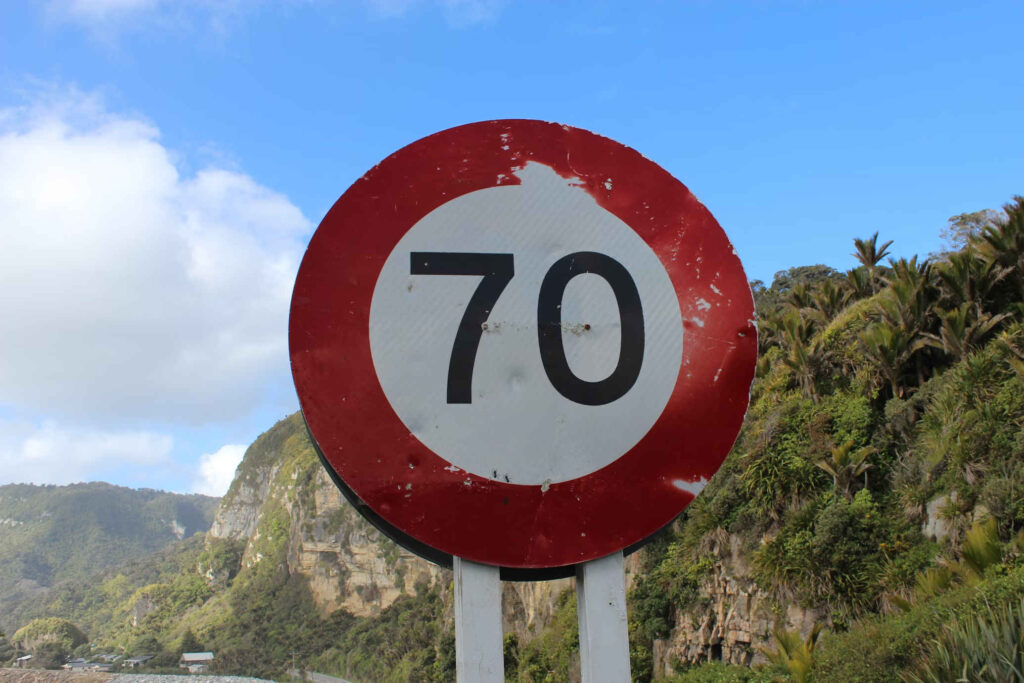Cabinet has agreed on the coalition Government’s direction of travel for a new Land Transport Rule to be signed by the end of 2024.
This new rule will reverse the previous government’s blanket speed reductions imposed on motorists across New Zealand, Transport Minister Simeon Brown says.
“The new rule will ensure that when speed limits are set, economic impacts – including travel times – and the views of road users and local communities are taken into account, alongside safety.
“The previous government’s untargeted approach resulted in blanket speed limit reductions across the country, rather than targeting high crash areas of the network. The new Rule will lead to blanket speed limit reductions being reversed by the end of next year, except where it is unsafe.
“It is critical that we have the right settings in place to boost economic growth and improve road safety, enabling Kiwis to get to where they want to go, quickly and safely.
“I am working with the Minister for Regulation, David Seymour, to ensure that the rule removes ‘nanny state’ regulations aimed at slowing Kiwis down and focuses on practical, targeted safety measures,” Mr Brown says.
“Setting lower speed limits without taking into account how it would affect travel times and economic activity was irrational. The Coalition Government is committed to making principled and rational policy decisions, including doing cost-benefit analysis where appropriate,” Regulation Minister David Seymour says.
As part of the National-ACT coalition agreement, the new rule will require variable speed limits around schools during pick-up and drop-off times and enable 110km/h speed limits on new and existing Roads of National Significance.
“Implementing variable speed limits on roads approaching schools during pick-up and drop-off times, rather than permanent reductions, will keep young New Zealanders safe when they are arriving at or leaving school. Similar approaches are used in parts of the United Kingdom, Australia, the United States, and other countries to prioritise safety,” Mr Brown says.
“In setting the direction for the new rule, the Government has found a pragmatic way to get Kiwis moving faster while ensuring that safety interventions are targeted and fit for purpose. It makes no sense to have roads that can safely accommodate higher speed limits, only to require motorists to drive more slowly.
“The coalition Government recognises that Roads of National Significance improve safety. That is why we will enable new expressways to have 110km/h speed limits from the day they open.
“Later this year, we will also publish new objectives for road safety which focus on safer roads, safer drivers, and safer vehicles. This will target the highest contributing factors in fatal road crashes, particularly alcohol and drugs.”
The new Land Transport Rule is currently being developed and will go out for public consultation in the coming months. Following this, the rule will be signed by the Minister of Transport before the end of this year.
Image credit: Titus Blair

Just a rort to frustrate law abiding motorists into breaking what was previously the actual speed limit to dish out hefty fines from the govts tax collection agents in blue.
The 80km on roads in the Wairarapa, just one example, that are wide and mostly straight is pure horse s***.
It’s about labour’s broader unhinged desire to make life as difficult and expensive and annoying as humanly possible while preaching to us about how kind they are.
Because apparently the climate will collapse if we’re in any way shape or form happy for longer than ten seconds.
The police definitely play the parts for the last government, they are scum.
Let’s see how well those EV’s hold-up in a 110KPH crash…
Most two-lane roads using gravel chip-stone and bitumen should only be 90KPH.
Four-lane motorways- 110KPH is fine IF you have a vehicle that can run that speed for extended periods of time.
Imagine the EV power consumption used on such a high speed pavement- lowering range and costing more to charge enroute.
In Italy, recharging an EV is more expensive than petrol.
The electrical grid and infrastructure cannot support EV’s if the EV population exceeds 23%.
Those charging their EV’s at home should check their homeowners policies.
I’ll stick with my untrackable 1966 Ford Falcon…
Frankly, if they are worried about economic impacts of travel times and the views of road users and local communities, then I respectfully suggest a review of bus lanes. In Wellington. Newtown’s main drag is clogged with bus lanes. The number of buses are not suffering from the same abundance of cars who are merely trying to get across the city in without the use of the empty lane. To add insult to injury, every day there are 2 guys videoing citizens who find themselves the financiers of the out of control Wellington city council debts. Most people pay money for services and product they can use, and that keeps the economy moving. Who on earth can an organisation be that far in debt when they collect such a massive amount of rates. This bunch of irresponsible councillors should be under statuary management until such time there is no debt.